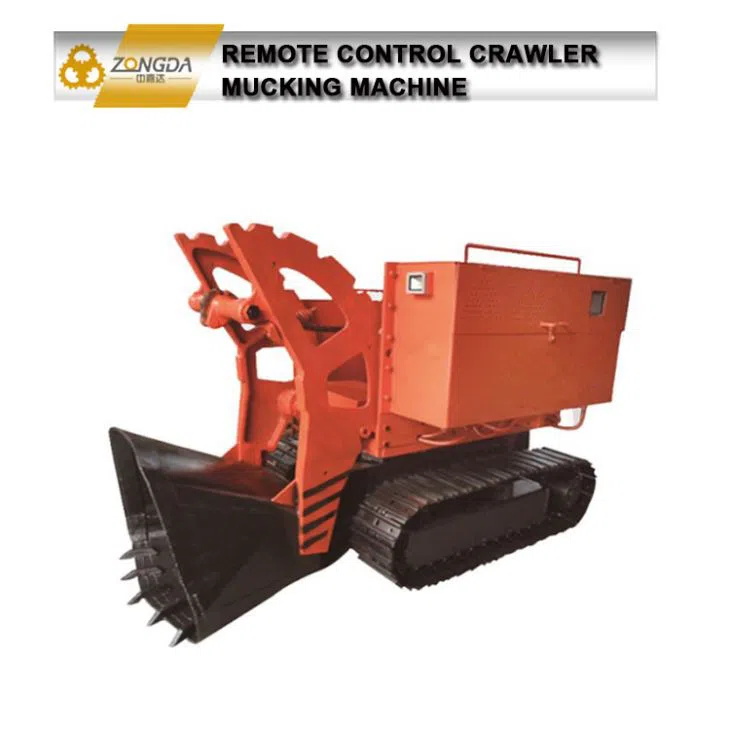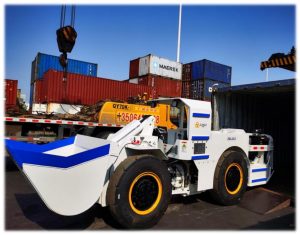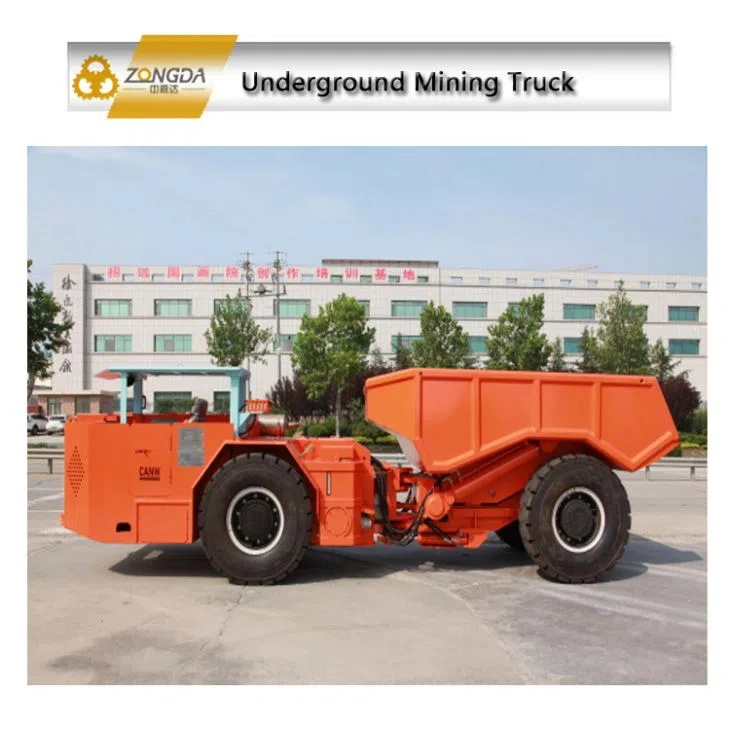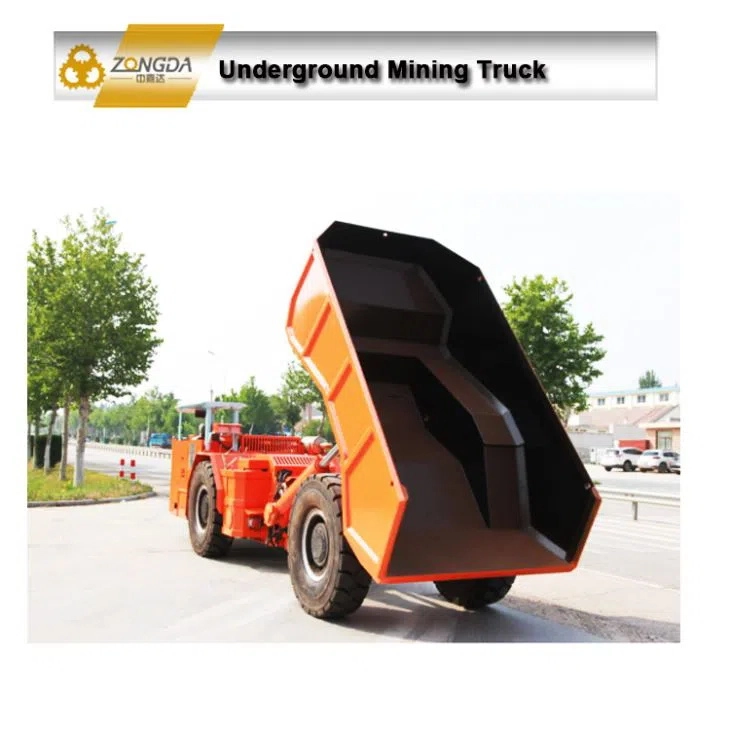Underground mining loaders are essential machinery in the mining industry. These robust machines play a critical role in transporting materials from the mine face to the surface or designated dump points. They are specifically designed to operate in confined spaces and harsh underground conditions, ensuring efficiency and safety. Primarily, these loaders are engineered to handle heavy loads and navigate through narrow tunnels. Their compact size and powerful engines allow them to maneuver easily within the limited underground space. Additionally, their advanced hydraulic systems provide the necessary force to lift and transport large volumes of mined material. Safety is a paramount concern in underground mining operations. Therefore, these loaders are equipped with features such as reinforced cabins, advanced braking systems, and real-time monitoring capabilities. These safety features help protect operators from potential hazards associated with underground mining environments. Moreover, modern underground mining loaders are increasingly being integrated with automation and remote-control technologies. This advancement enhances operational efficiency and reduces the risk of accidents by allowing operators to control the machines from a safe distance. In summary, underground mining loaders are indispensable for efficient material handling in subterranean mining activities. Their design and technological advancements contribute significantly to improving productivity and ensuring the safety of mining operations.
Underground mining loaders are indispensable in the extraction process, performing crucial tasks that facilitate efficient and safe mining operations. These machines are designed to load and haul materials, essential activities that keep the mining processes running smoothly. Apart from this fundamental function, their ability to maneuver in confined spaces significantly enhances their value in the mining industry.
Key Functions and Mechanisms
Loading and Hauling Materials
One of the primary functions of an underground mining loader is to load and haul materials from mining sites to processing locations. This involves picking up mineral-rich ore and other excavated materials, then transporting them to the next stage of the mining process. The loaders’ robust design and powerful engines enable them to handle these heavy loads repeatedly, ensuring continuity and efficiency in mining operations.
Maneuvering in Confined Spaces
Another vital aspect of underground mining loaders is their ability to maneuver efficiently in confined spaces. Due to the narrow and often cramped conditions of underground mines, these machines are designed with compact dimensions and articulated steering systems. This feature allows them to navigate through tight passages and around sharp corners, ensuring they can reach and operate in areas that larger machinery cannot.
Types of Underground Mining Loaders
Diesel-Powered Loaders
Loaders powered by diesel engines are frequently utilized in underground mining because of their robust power output and dependable performance. These loaders feature diesel engines that generate the essential torque and mechanical force needed to manage heavy loads and navigate challenging terrains. Their ability to operate independently from electrical power sources enhances their versatility, making them well-suited for various mining settings.
Electric Loaders
Electric loaders are gaining popularity in the mining industry, primarily due to their lower environmental impact and reduced operating costs. These loaders run on electric motors, which provide a quieter operation and emit no exhaust gases, making them ideal for use in enclosed underground environments. Additionally, advancements in battery technology have significantly enhanced their performance and range, making them a viable alternative to diesel-powered loaders.
Terrain Challenges in Underground Mining
Characteristics of Rocky Terrains
Variability in Rock Sizes
Rocky terrains in underground mining present a unique set of challenges, primarily due to the variability in rock sizes. The presence of large boulders mixed with smaller rocks can create an uneven surface that is difficult for machinery to navigate. This variability demands loaders that can adapt quickly and withstand the unpredictable conditions encountered during the mining process.
Stability and Hardness Concerns
The stability and hardness of rocky terrains can also impact mining operations significantly. These surfaces may be extremely hard, potentially causing damage to mining equipment and increasing wear and tear. In some cases, the rock formations may be unstable, posing additional risks to both machinery and personnel operating in these environments. Therefore, specialized loaders are required to manage these conditions effectively.
Impact on Loader Performance
Traction Issues
Rough and rocky terrains can pose significant traction challenges for underground mining loaders. Irregular and loose rock surfaces may result in slippage and a loss of control, making it difficult for loaders to stay on their designated path and work efficiently. Adequate traction is crucial to guarantee that loaders can transport heavy loads without facing interruptions or delays.
Wear and Tear on Machinery
Operating on rocky terrain can accelerate the wear and tear on mining loaders, affecting their longevity and performance. Sharp rocks and abrasive surfaces can damage tires, tracks, and the undercarriage of the loaders, necessitating frequent maintenance and part replacements. This increases operational costs and can lead to downtime, impacting overall productivity in the mining operation.
Technological Solutions for Handling Rocky Terrains
Advanced Suspension Systems
Adaptation to Uneven Surfaces
Advanced suspension systems are instrumental in enabling underground mining loaders to handle rocky terrains efficiently. These systems are designed to adapt to the uneven surfaces commonly found in mining environments. By providing better shock absorption and stability, they ensure that the loaders can maintain their performance even on the roughest terrains.
Reducing Vibration Impact
Reducing the impact of vibrations is another critical function of advanced suspension systems. Continuous vibrations from operating on rocky surfaces can affect the comfort and safety of the operators and contribute to the wear and tear of the machinery. Enhanced suspension systems help to mitigate these vibrations, ensuring smoother operation and prolonging the lifespan of the loaders.
High-Performance Tires and Tracks
Durability Features
High-performance tires and tracks are crucial for sustaining the efficiency of underground mining loaders on rugged terrains. These components are built with durability features like reinforced sidewalls and optimized tread patterns to endure the harsh conditions. This guarantees that the loaders can function for extended periods without needing frequent tire or track replacements.
Maximizing Grip on Rocks
To maximize grip on rocky surfaces, specialized tires and tracks are used. These are engineered to provide superior traction, reducing the risk of slippage and improving the overall stability of the loaders. Enhanced grip features enable the loaders to move more efficiently and safely across uneven and loose rock terrains, addressing one of the significant challenges posed by these environments.
Enhanced Navigation Systems
Precision Steering Capabilities
Enhanced navigation systems play a crucial role in helping underground mining loaders handle different types of terrain, especially rocky ones. Precision steering capabilities allow loaders to navigate through narrow passages and around obstacles with greater accuracy. This ensures that the loaders can operate more efficiently, reducing the time required to complete tasks and minimizing the risk of accidents.
Avoidance Algorithms for Large Obstacles
Avoidance algorithms are another technological advancement that aids in the efficient handling of rocky terrains. These algorithms enable loaders to detect and navigate around large obstacles automatically, minimizing the risk of collisions and damage. By incorporating such intelligent systems, loaders can maintain continuous operation, even in the most challenging conditions encountered in underground mining.
To sum up, underground mining loaders are skillfully designed to manage rocky terrains by integrating cutting-edge technologies and durable design elements. These machines feature enhanced suspension systems, high-performance tires, and advanced navigation systems. Such attributes enable them to function effectively in the most challenging mining conditions, overcoming the various difficulties posed by rocky terrains.
Best Practices for Efficient Loader Operation in Rocky Terrains
Pre-Operation Inspection and Maintenance
Checking Hydraulic Systems
An integral part of maintaining the efficiency of an underground mining loader in rocky terrains is the thorough inspection of hydraulic systems before beginning operations. These systems power the loader’s movements and lifting capabilities, so any malfunction can lead to significant operational issues. Regular checks include inspecting hydraulic fluid levels, ensuring there are no leaks, and verifying that all hoses and connections are in good condition. This proactive maintenance helps prevent unexpected breakdowns and ensures the loader can cope with the demands of rocky environments.
Inspecting Tire Conditions
Tire conditions play a critical role in the loader’s performance on rocky terrains. Before operation, it is essential to check for any signs of wear and tear, such as cuts, cracks, or punctures. Ensuring that the tires are properly inflated and have adequate tread depth is crucial for maintaining traction and stability on uneven surfaces. Regularly rotating and replacing tires can also extend their lifespan and contribute to safer and more efficient operation. By prioritizing tire maintenance, operators can mitigate risks associated with navigating challenging rocky terrains.
Operator Training Techniques
Efficient Maneuvering Skills
Operator training is paramount for efficient loader operation in rocky terrains. Training programs should focus on developing the operator’s maneuvering skills, particularly in confined spaces and on uneven surfaces. This includes practicing precise control of the loader, optimizing load distribution for stability, and mastering techniques to avoid slippage. Additionally, operators should be trained to anticipate and react to the unpredictable conditions often encountered in rocky terrains, ensuring they can handle the loader safely and efficiently under various scenarios.
Safety Protocols
Adherence to safety protocols is crucial in underground mining operations, particularly when managing rocky terrains. Comprehensive training must encompass safety procedures such as effective communication practices, emergency response plans, and the correct use of personal protective equipment (PPE). Operators should be knowledgeable about the potential hazards linked with rocky terrains, including rockfalls and equipment malfunctions, and understand how to mitigate these risks efficiently. By adhering to established safety protocols, operators can reduce accidents and foster a safer working environment.
Introduction to Zongda Mining’s Loaders
Overview of Zongda Mining
Zongda Mining is a well-established name in the mining industry, known for its innovative and reliable mining equipment. With years of experience and a commitment to quality, Zongda Mining has continually provided solutions that meet the diverse needs of mining operations worldwide. Their range of underground mining loaders is designed to tackle various challenges faced in the mining sector, including those presented by rocky terrains.
Unique Features of Zongda Loaders
Specialized Design for Rugged Terrain
Zongda Mining’s loaders are equipped with specialized designs to handle rugged terrains efficiently. Their loaders feature reinforced frames and robust components that withstand the stresses of operating on rocky surfaces. The advanced suspension systems integrated into Zongda loaders provide superior shock absorption, maintaining stability and performance even in the harshest conditions. Additionally, these loaders come with high-performance tires and tracks that enhance traction and durability, ensuring they can efficiently navigate uneven and loose rock surfaces. This specialized design makes Zongda loaders an excellent choice for mining operations dealing with the complexities of rocky terrains.
In essence, understanding How does an Underground Mining Loader handle different types of terrain? helps in appreciating the technological advancements and meticulous design considerations that go into manufacturing these machines. By following best practices in maintenance and training, and leveraging the unique features of loaders from renowned suppliers like Zongda Mining, mining operations can achieve higher efficiency and safety in challenging rocky terrains.






